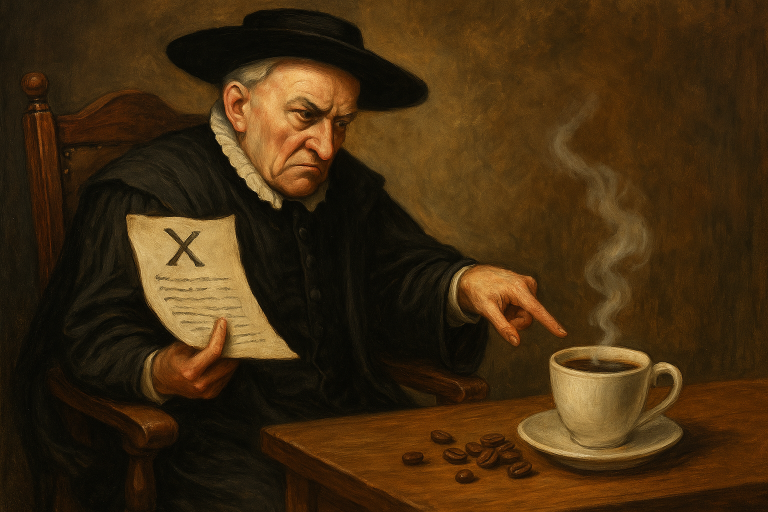
Brazil is synonymous with coffee. As the world’s largest producer for over 150 years, its influence on the global coffee industry is undeniable. But Brazil’s coffee story is more than just numbers—it’s a tale of economic transformation, labor struggles, environmental shifts, and cultural identity.
In this article, we’ll explore the origins of Brazil’s coffee boom, how it shaped the country’s economy and society, and how its legacy continues to influence the world of coffee today.
Coffee plants were introduced to Brazil in 1727, allegedly smuggled from French Guiana by Francisco de Melo Palheta, a Portuguese officer. The tropical climate and fertile soil of Brazil’s southeastern regions proved ideal for growing Coffea arabica, and small-scale cultivation began.
But it wasn’t until the early 19th century that coffee exploded into a national obsession. With growing demand in Europe and North America, Brazil had the land, labor, and climate to meet it—and quickly became the powerhouse of global coffee production.
Coffee production in Brazil grew on the back of large plantations called fazendas. These were sprawling estates primarily located in the regions of:
By the 1830s, coffee had become Brazil’s most important export. The wealth generated by these plantations helped transform Brazil into a major economic force in the Americas.
But the rapid growth came at a price: the enslavement of millions.
Brazil was the last country in the Western world to abolish slavery, doing so only in 1888. Until then, enslaved Africans were the primary labor force on coffee plantations.
The grueling work of planting, harvesting, and processing coffee was done under brutal conditions. Enslaved people built the very foundations of Brazil’s coffee economy, yet their stories remain marginalized in mainstream narratives.
Even after emancipation, the plantation system persisted—with new forms of labor exploitation.
After the abolition of slavery, Brazil’s fazendas turned to immigrant labor, attracting workers from:
Many immigrants arrived through government-subsidized programs, believing they were coming to own land. Instead, they found themselves in semi-feudal conditions, working long hours for low pay and living in poor conditions.
Despite these hardships, immigrant labor fueled further expansion and helped shape Brazil’s multicultural society—especially in São Paulo, which became a coffee and immigration hub.
Coffee wealth wasn’t just confined to the countryside. It reshaped Brazil’s cities, particularly:
Railroads were built to transport coffee from the interior to the ports. Banks, export houses, and stock exchanges grew around the coffee economy, transforming Brazil’s urban and financial landscape.
By the late 19th and early 20th centuries, Brazil had become a “coffee republic.” The powerful alliance between coffee planters in São Paulo and politicians in Minas Gerais dominated national politics in what was known as “café com leite” (coffee with milk) politics.
These elites controlled export tariffs, banking systems, and labor laws. Coffee wasn’t just a crop—it was a political weapon used to maintain class hierarchies and economic dominance.
One of Brazil’s most ambitious economic experiments came in the early 1900s with the Valorization of Coffee program. Facing falling prices due to oversupply, the government began buying and storing excess coffee to maintain high prices on the international market.
This strategy was a form of market intervention rarely seen at the time—and it worked, stabilizing prices and protecting Brazilian producers.
It also showed how central coffee had become to Brazil’s economy—enough to warrant government protection on a global scale.
The massive expansion of coffee cultivation in Brazil had serious environmental impacts:
In more recent decades, Brazil has moved toward sustainable coffee farming in some regions, but environmental concerns remain an ongoing issue tied to large-scale production.
Coffee is deeply embedded in Brazilian identity. It’s present in:
Coffee is not just an export—it’s a social ritual. In homes, offices, and rural villages, offering a cup of coffee is a gesture of hospitality, warmth, and tradition.
Today, Brazil remains the largest coffee producer in the world, responsible for about one-third of global supply.
But it’s also becoming a leader in:
Regions like Cerrado Mineiro, Sul de Minas, and Espírito Santo are producing award-winning coffees that compete with those from Colombia, Ethiopia, and Kenya.
Brazilian producers are also embracing innovation, using experimental fermentation, solar drying, and precision processing to elevate quality.
Brazil’s coffee story is a complex tapestry of wealth and inequality, resilience and reinvention. Coffee fueled Brazil’s emergence as a global power, shaped its cities and politics, and continues to drive its economy and culture.
But it also reminds us of the human cost behind every bean—from enslaved workers to struggling farmers.
As the world moves toward more ethical and sustainable coffee practices, Brazil stands at the crossroads—still leading, still evolving, and still pouring the coffee that helps fuel the world.

Gabriel Rodrigues é especialista em finanças pessoais e escritor, com ampla experiência em economia, planejamento financeiro e gestão de recursos. Apaixonado por ajudar as pessoas a alcançarem sua saúde financeira, ele explora temas variados, desde investimentos até estratégias de poupança. Quando não está escrevendo, você pode encontrá-lo estudando novas tendências financeiras e oferecendo consultoria para quem busca melhorar sua relação com o dinheiro.